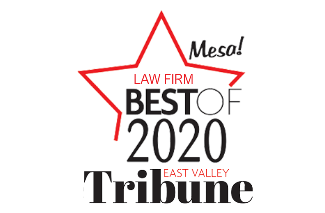Dealing with a personal injury claim can feel overwhelming, especially when trying to prove your side of the story. Collecting the right evidence in Arizona can significantly impact your claim’s success. Understanding what evidence to gather and how to document details effectively will help strengthen your case.
Equipping yourself with the right strategies and tools ensures that your personal injury claim is as solid as possible. This proactive approach provides clarity and reinforces your credibility, making it easier for others to understand your position.
Identifying Key Evidence Types for Personal Injury
Identifying the right evidence in Arizona personal injury claims is crucial to supporting your case. With proper evidence, you can effectively demonstrate the impact of the injury on your life. Each piece of evidence helps paint a clear picture of what happened and how it affected you.
Begin by considering the following key evidence types:
Photographic Evidence
Take clear, detailed photos of the accident scene, injuries, property damage, and anything else relevant. These visuals can help relay the accident’s severity and impact visually.
Police Reports
Obtain copies of any official reports made at the scene. These documents often contain vital information about the accident’s circumstances and initial observations.
Witness Testimonies
Collect statements from individuals who witnessed the event. Having multiple perspectives can bolster your case by corroborating your account of events.
Medical Records
Gather detailed documentation of your injuries and treatment. Records should include initial medical evaluations, ongoing treatment plans, and prognosis.
Personal Documentation
Keep a journal of your injuries, pain levels, and the accident’s impact on your daily life. This personal account can highlight changes in your lifestyle and well-being.
Focusing on these types of evidence ensures that your claim accurately and comprehensively captures the incident. Collecting this information thoroughly helps build a strong foundation for your personal injury case.
Documenting the Accident Scene Thoroughly
The immediate aftermath of an accident is often chaotic, but carefully documenting the scene is essential for a personal injury claim in Arizona. The details you capture quickly can significantly contribute to the strength of your case later. Here’s how to document the scene effectively, ensuring no crucial detail is omitted.
Begin by taking photographs from multiple angles. Capture:
– The Overall Scene: Photograph the entire accident location to provide context. Include any roadway marks, debris, or environmental conditions that might be relevant.
– Close-Ups: Focus on specific details like vehicle damage, any injuries you sustained, and pertinent safety signs or signals.
– Surroundings: Document any contributing factors, like poor lighting, weather conditions, or obstacles, that may have played a role.
In addition to photos, make a quick sketch of the accident scene. Include positions of vehicles, pedestrian pathways, and any traffic signs or signals present at the time. This helps create a visual map of what occurred and can aid in communicating timelines and causality.
If possible, collect the contact information of nearby businesses or homes with security cameras. These might have captured footage offering an impartial view of the accident. All these measures ensure you gather comprehensive evidence, capturing an accurate representation of what took place.
Gathering Witness Statements Effectively
Witness statements are crucial in strengthening a personal injury claim in Arizona. Securing accurate and reliable statements from those who saw the accident can provide an unbiased account that supports your version of events. Knowing how to gather these statements effectively ensures a strong foundation for your claim.
Start by identifying witnesses at the scene immediately. Approach them politely and ask for their contact information. This includes their full name, phone number, and a reliable email address. If they agree, use a recording app to capture their statements while the incident is still fresh in their minds. Make sure to clarify:
– What They Saw: Ask witnesses to describe the accident in their own words, focusing on what they saw and heard.
– Positions and Timing: Have them clarify their location during the accident and the approximate timing of the events they witnessed.
– Details of the Incident: Encourage them to discuss specific details, such as vehicle speeds, weather conditions, or unusual behaviors noticed.
After gathering the initial information, follow up with witnesses to confirm details and address any inconsistencies or additional information they might recall. Witness statements can support proving fault and clarifying the sequence of events.
Compiling Medical Records and Related Documentation
Medical documentation is a vital component of any personal injury claim. These records provide tangible proof of injuries, treatments, and long-term effects, all essential for determining compensation. In Arizona, compiling these documents accurately can make a difference in the outcome of your claim.
Start by obtaining all relevant medical records related to the accident. This should include the initial emergency room visit, follow-up consultations, and specialist reports. Ensure that your documentation covers the following:
– Treatment Summary: A comprehensive summary of treatments received, including surgeries, physical therapy, and medications prescribed.
– Diagnosis Reports: Detailed information about the diagnosis of injuries and expected recovery timelines.
– Billing Statements: Keep records of all medical expenses incurred, from doctor’s visits to medications, to highlight the financial impact.
– Correspondence with Insurers: Any letters or communication with insurance companies about your treatments and claims.
Alongside medical records, personal notes about how the injuries affect your daily life can add depth to your claim. This includes noting pain levels, mobility issues, and the impact on your ability to work or enjoy activities. These details together provide a holistic view of the incident’s impact, which is invaluable for your case.
Conclusion
Collecting evidence for a personal injury claim in Arizona involves many steps, each crucial in building a strong case. You strengthen your position by understanding and effectively applying guidelines on evidence gathering, from identifying key types to meticulously documenting accident scenes, securing witness statements, and compiling medical records. Your prepared and organized approach allows you to tell your story convincingly, helping paint a clear picture of the challenges and hardships.
Visit www.azlegal.com for more insights into navigating personal injury cases and other legal matters in Arizona. Trust the dedicated team at Rowley Chapman & Barney, LTD to guide your efforts in collecting and presenting evidence professionally and carefully. Our experienced personal injury attorneys in Arizona are ready to help you make informed decisions for your unique situation.





